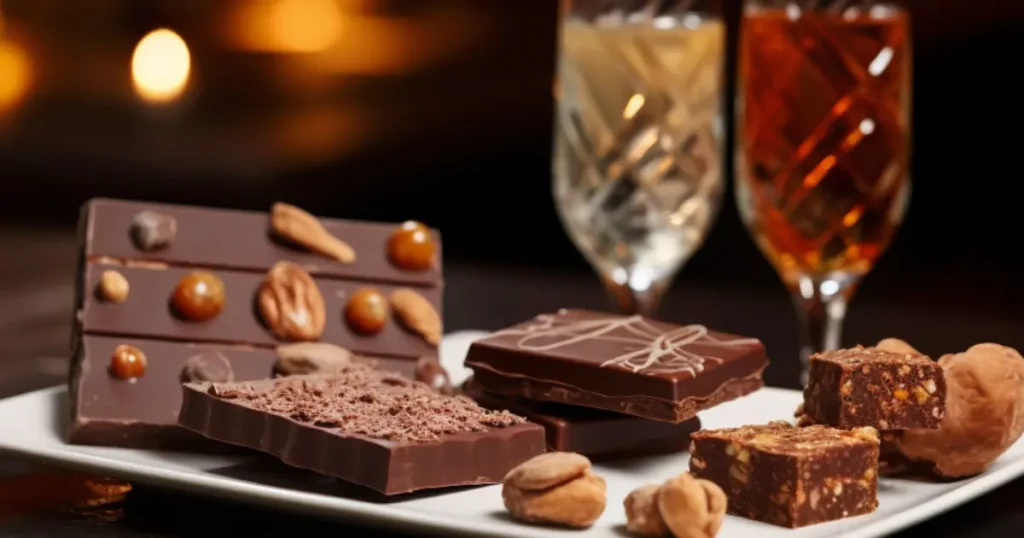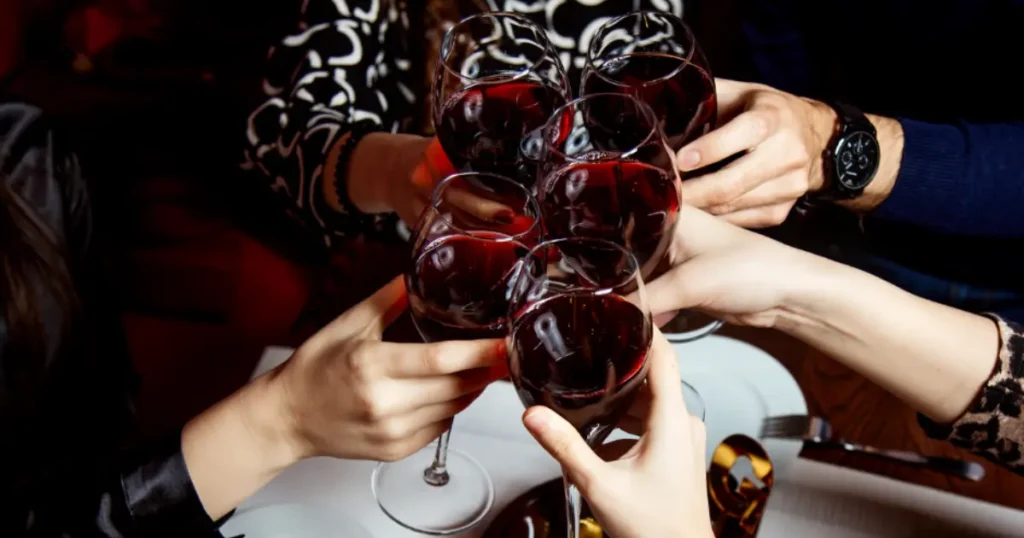There are but a few combinations more indulgent and delightful than chocolate and wine. While they may seem like unusual partners at first when paired correctly, they create an exquisite harmony of flavors that dance on the palate. But what makes chocolate and wine such a compelling pairing? And how do you ensure that the experience is a match made in heaven rather than a clash of conflicting tastes? Let’s take a journey into the art of chocolate and wine pairing to discover how these two treats can come together to create culinary magic.
The Science Behind Chocolate and Wine

At the heart of every successful pairing is balance. Both chocolate and wine have rich, complex flavor profiles that can either complement or contrast one another. The key is finding that perfect middle ground, where the sweetness, bitterness, acidity, and tannins of both elements come together seamlessly.
Chocolate contains fats, sugars, and a hint of bitterness, which can coat your palate. The tannins in wine—the bitter compounds found in grape skins—react with the cocoa in chocolate, intensifying both flavors. If you’re not careful, this can overwhelm your taste buds. But, with the right combination, these elements can elevate each other, bringing out subtle nuances in both the chocolate and the wine.
Pairing 101: General Guidelines
When pairing chocolate and wine, it’s essential to consider the intensity of both. Generally, the darker the chocolate, the bolder the wine should be. Here are a few general guidelines:
- White Chocolate: Known for its creamy, buttery sweetness, white chocolate lacks the cocoa bitterness found in darker varieties. This makes it an ideal pairing with light, sweet wines like Moscato d’Asti or a late harvest Riesling, which enhance the creamy texture and offer fruity undertones that brighten the overall experience.
- Milk Chocolate: Creamier and sweeter than dark chocolate, milk chocolate pairs well with slightly sweeter, medium-bodied wines such as Pinot Noir or Merlot. These wines offer smooth tannins and fruity notes that harmonize with the creaminess of milk chocolate, making for a soft, velvety combination.
- Dark Chocolate: With its rich, bitter cocoa flavor, dark chocolate needs a bold wine to match. Wines like Cabernet Sauvignon, Zinfandel, or even a full-bodied Shiraz are excellent choices. Their higher tannin levels cut through the intensity of the dark chocolate, balancing its bitterness with fruitiness and depth.
- Chocolate with Nuts: Chocolate varieties that include nuts like almonds or hazelnuts pair well with Sherry or Madeira. These wines have a nutty undertone that complements the earthy flavor of the nuts while enhancing the sweetness of the chocolate.
- Spicy Chocolate: For chocolates that have added spices like chili or cinnamon, a bold Zinfandel or Syrah can stand up to the heat and spices while bringing out fruity, peppery notes that complement the flavors.
Finding the Perfect Match: Tips for Pairing
Pairing wine with chocolate might seem straightforward, but it requires some finesse. Here are some tips to make sure your pairing hits the sweet spot:
- Match intensity: Ensure the intensity of the wine complements the intensity of the chocolate. Too bold of a wine can overpower the chocolate, while too light of a wine can get lost in the richness of dark chocolate.
- Taste from light to dark: If you’re hosting a chocolate and wine tasting, start with lighter chocolates like white or milk and work your way to darker varieties. This will prevent the stronger flavors of dark chocolate from overwhelming the subtler ones.
- Don’t forget sweetness: Ideally, your wine should be as sweet or sweeter than your chocolate. If the chocolate is sweeter than the wine, it can make the wine taste sour or bitter in comparison.
Why Chocolate and Wine Pairings Work
At first glance, pairing chocolate with wine may seem unusual, but when you break it down, it makes perfect sense. Both chocolate and wine share complex flavor profiles that range from sweet and fruity to earthy and bitter. By pairing them correctly, you’re not just getting a sugary treat — you’re unlocking layers of flavor that were always there, just waiting to be discovered.
Consider a bold Cabernet Sauvignon paired with 70% dark chocolate. The wine’s dark fruit notes mingle with the chocolate’s bitterness, but the tannins in the wine help cut through the richness, leaving you with a smooth, velvety finish. Or imagine a sweet, citrusy Moscato with a piece of white chocolate — the fruity acidity in the wine balances the buttery sweetness, leaving a refreshing, balanced taste on your palate.
Bringing the Pairing Home

Next time you’re preparing for a dinner party or just indulging in a quiet night, why not consider a chocolate and wine pairing? Whether you’re a fan of rich dark chocolates or sweet, creamy varieties, there’s a wine out there to enhance your experience.
If you’re experimenting for the first time, consider setting up a tasting for yourself and a few friends. Choose a variety of chocolates (white, milk, dark) and wines, and take your time to explore which combinations work best for your palate. This is not just about tasting but about savoring — discovering how the flavors of wine and chocolate interact and elevate each other.
Elevate Your Culinary Experience
The beauty of pairing wine with chocolate is that it can be as simple or as extravagant as you want it to be. It’s an art form in itself, one that invites you to slow down, appreciate the craftsmanship behind both the wine and the chocolate, and enjoy the magic that happens when they come together.
And of course, to create and present such an indulgent culinary experience, having the perfect kitchen is crucial. Whether you’re serving customers at a restaurant or indulging guests at home, a well-designed kitchen can elevate every dish and dessert you prepare. That’s where HPG Consulting comes in — experts in commercial kitchen design. From layout to equipment, we ensure your kitchen is optimized for success, so you can focus on creating delicious, memorable experiences.